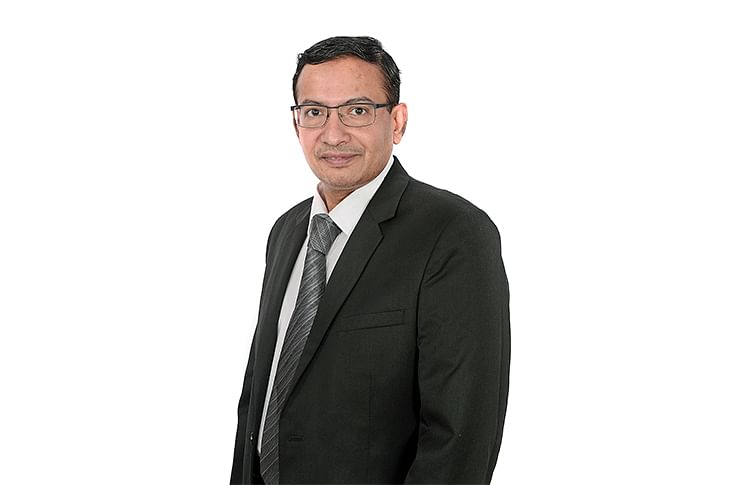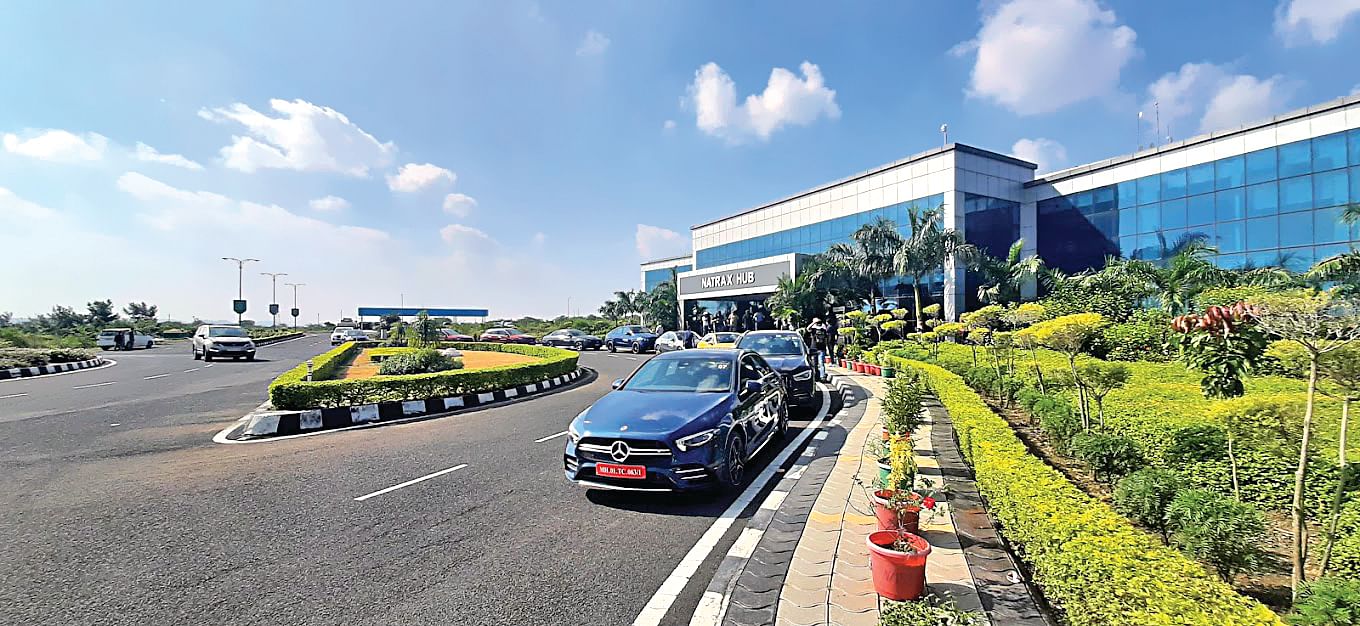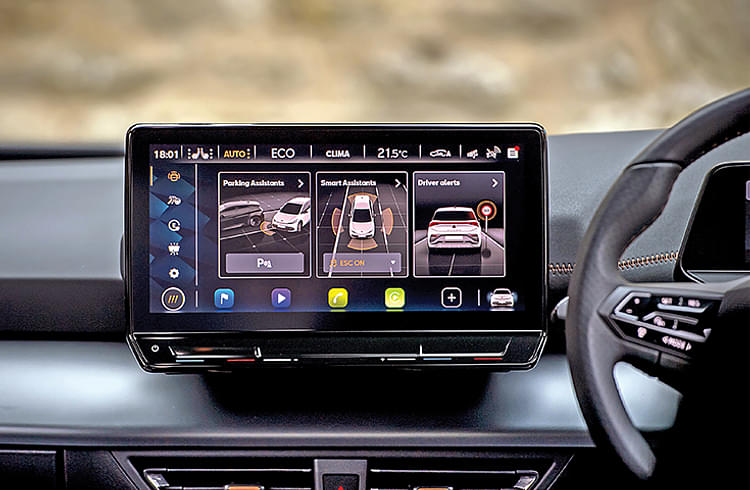Developing ADAS for Indian conditions
With unique driving conditions and challenges, there is a need for testing almost 2,00,000 accident scenarios to fine-tune an ADAS system for Indian roads.
The Indian automotive industry is witnessing a significant rise in the demand for advanced driver assistance systems (ADAS) with the need to enhance road safety and driving convenience. However, unlike developed economies, the country faces a significant challenge of poor road infrastructure such as the lack of standardised signage and lane markings, the pre-requisites for the reliable functioning of the sensor-fusion-based safety technology.
Developing ADAS for the Indian market, therefore, requires adapting to these unique road infrastructure challenges. This includes accounting for diverse road conditions, unpredictable traffic patterns and addressing the lack of lane markings. ADAS technology needs to be robust enough to handle the varying scenarios in the driving environment and provide accurate and reliable assistance to drivers.
According to Ramanathan Srinivasan, Managing Director, Automotive Test Systems (ATS), “The ADAS technology in India must be tuned for Indian conditions and developing ADAS for the Indian market requires adapting to the country’s unique road infrastructure challenges.”
“Unlike emissions testing, ADAS testing and validation is an extremely complex job, as it requires evaluation of almost 2,00,000 scenarios on the track or in simulation. Given the lack of a common accident scenario database, the focus area, therefore, should be data collection and scenario generation,” he added.
 'ADAS features are likely to be democratised. It is a question of when we are going to implement it for Indian conditions': Ramanathan Srinivasan, MD, Automotive Test Systems (ATS)
'ADAS features are likely to be democratised. It is a question of when we are going to implement it for Indian conditions': Ramanathan Srinivasan, MD, Automotive Test Systems (ATS)
In his technical presentation on ‘Developing ADAS for Indian Conditions’ at the Autocar Professional Road Safety Conclave, Srinivasan pointed out that in the current absence of a regulatory framework binding ADAS technology in vehicles, India has been taking reference for standards for ADAS testing from those defined in the Euro NCAP test protocols, which are uniquely inclined towards European conditions.
“However, our driving environment is significantly different from Europe, and therefore, we must have an India-specific regulation, focusing on the challenges that we face on Indian roads. We need to create a national database of accident scenarios in India, and OEMs as well as technology providers must have access to this data, to test and validate their ADAS technology in the Indian conditions,” Srinivasan said.
Data collection and India-market use cases
An ADAS system, which works on the fusion of data from various sensors such as radar, lidar, ultrasonic sensors, as well as cameras, helps prevent an accident by either sounding an alarm in an emergency, or the vehicle taking control from the driver, depending upon the level of autonomy offered. According to Srinivasan, “Forward collision warning, autonomous emergency braking, lane-keep assist, autonomous parking, and driver drowsiness detection are the early-stage use cases of ADAS in vehicles in India, where OEMs have started offering such features based on implementation of a couple of radar and camera modules.”
“While companies are today offering these safety features in higher variants of their products, over a period, ADAS features are likely to be democratised. It is a question of when we are going to implement it for Indian conditions, as engineers are working towards solving the technical challenges,” he added.
Srinivasan explained that the data required to test and validate ADAS features can only be collected by sophisticated equipment such as stereo cameras, IMUs, and an overall intelligent system which can record data about not just the vehicle but its environment and other actors around. “The next step is to filter out the irrelevant scenarios and focus on the critical ones where the vehicle needs to react. In total, there would be around 1,50,000-2,00,000 scenarios that a system needs to act upon, and these are required for the testing and validation of ADAS technology,” he said.
“As we have faster computers capable of processing several commands together, we are increasingly able to test and validate ADAS technology in the virtual world by virtue of simulations. By leveraging individual sub-system models such as tyres, steering, or braking models, the ADAS features can be tested and validated using simulation tools,” Srinivasan added.
Testing and validation of ADAS technology
Once the accident scenarios are generated, they need to be taken in the virtual world for the testing and validation of the ADAS technology. “It is impossible to test over 2,00,000 scenarios physically on a track, and therefore, we start with simulation. Most automotive companies are working towards creating algorithms, which can filter data and create it into usable scenarios to test an entire ADAS system in the virtual domain,” Srinivasan explained.
This virtual assessment of the system requires the scenarios to be interfaced with virtual sensors, and once done, the sensor combination in question is evaluated to assess whether it can detect, perceive, and analyse a possible accident situation, and avoid a collision, by using warnings or taking over control.
For instance, in case of the virtual assessment of the autonomous emergency braking (AEB) system, the time-to-collision (TTC) measurement is one of the most critical aspects under different vehicle conditions — stationary, or decelerating vehicle in the front which is slowing down gradually or suddenly. “There are several variants to test and validate just one ADAS feature alone to ensure its fool-proof functionality,” Srinivasan pointed out.
Multi-dimensional testing approach
ADAS testing requires various models to be brought into the virtual world. The model, and subcomponents such as chassis and powertrain components, must be as realistic as possible and replicate the vehicle dynamics in the virtual domain. The simulation software, or what ATS calls the ‘Plant Model,’ allows to bring all such sub-component models, as well as their engineering data into the simulation tool. According to Srinivasan, “The other important aspect is to bring different driving behaviours into the software by virtue of a Driver Model. This is crucial to determine the ADAS sub-system response with different driving styles. The multi-HIL system offers integration of all vehicle sub-systems including ADAS, powertrain, and chassis components, to quickly test and validate the algorithms, or sensor selection, in the virtual world itself.”
The ADAS testing and validation process encompasses a multi-dimensional testing approach with a combination between the real and virtual worlds, by the juxtapositioning of various setups including hardware-in-the-loop (HIL), software-in-the-loop (SIL), model-in-the-loop (MIL), and vehicle-in-the-loop test architectures, to assess the ADAS sub-system across the 2,00,000 possible accident scenarios. A driver-in-the-loop (DIL) setup, which involves a human being on a driving simulator, further allows six degrees of freedom to assess and validate the ADAS functionalities.
The final leg of an ADAS technology’s testing process is the physical validation on an ADAS test track, which is at least six lane wide and with Indian roads full of multi-vehicle interactions, ATS aims to simulate multiple vehicle interactions by virtue of ‘Swarm Testing’ at its upcoming ADAS test track in Telangana. “This is what we are trying to create at our upcoming laboratories in Telangana, as well as at NATRAX,” Srinivasan concluded.
‘We are spending around Rs 250 crore for an ADAS test track in Telangana’: ATS

With no physical ADAS test infrastructure presently in India, ATS has identified the need for such a facility that would allow simulation of an urban scenario to test and validate the life-saving technology to offer reliable functioning under distinct scenarios on the Indian roads.
According to Ramanathan Srinivasan, MD, ATS, “We are going to invest around Rs 200-250 crore in a new EV and ADAS facility in Telangana. It will house one of the most modern tracks for ADAS testing and development in India. The ADAS track will be operated in collaboration between ATS and Germany’s TUV Rheinland, which will also offer ADAS homologation services for India-made vehicles bound for overseas markets.”
While the new facility, which is likely to span 125 acres, is at least two years away, ATS has already set up an ADAS laboratory in Indore, at NATRAX, and has begun basic testing. It is now gearing to kick off both virtual and physical validation of the technology in the next six months by hiring the NATRAX track for basic ADAS validations.
This feature was first published in Autocar Professional's June 1, 2023 issue.
RELATED ARTICLES
Renault India's Quiet Fixer
As the head of Renault India, Francisco Hidalgo Marques faces his biggest challenge yet.
Tesla’s Test
Unlike in other markets, Tesla has taken a long-game approach in India, focusing on creating the infrastructure first.
‘India’s E20 Strategy Is the Template Europe Now Needs’
Mahle CEO Arnd Franz believes India’s flex-fuel shift is proving more resilient and market-aligned than the EU’s all-ele...






 05 Jun 2023
05 Jun 2023
 10563 Views
10563 Views





 Ketan Thakkar
Ketan Thakkar




